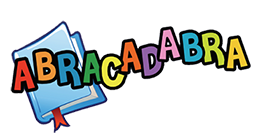Activities: Understanding the Story (Comprehension)
Comprehension Monitoring
Overview
Objective
As they are reading a story, students identify on each page the incorrect word, meaning the one that does not make sense. This activity is best done after children are familiar with a story so they can tell which word does not make sense in the text.
Facilitation Tips
Students can work as a group (reading the story and looking for the nonsense words) and take turns controlling the computer. If a word is not known, they can click on it to get help.
Levels
There is one nonsense word per page in every story.
Note
Please note that the LTK+ team has discovered that the segmented version of words that should have a short O, instead use a long O. For example, the word dog is segmented as /d/ /oʊ/ /g/ instead of the proper /dɒg/. We will work to correct this error.
Activity Insights
What is Comprehension Monitoring?
Comprehension monitoring is how students gauge their understanding of a text as they read. Students with good comprehension monitoring will recognize when they aren’t understanding, will stop, and then will try to find strategies for dealing with the problem.
Why do students struggle with Comprehension Monitoring?
There are many reasons why students struggle with this skill. Some may still be having difficulty with decoding words. Others may be rushing through a text, failing to realize they aren’t understanding key points. It is also possible that the text chosen is too advanced for a student so they don’t understand the words much less the subject matter.
How do I further support students?
Work with struggling students, ideally in small groups, to target their weak skills. They may need more practice in decoding or they might need to work with a similar story. Ask students questions about the text and encourage them to describe what a story is about.
Linked Stories
Darryl! Don't Dawdle
Henny Penny
How a Bean Sprouts
The Dove and the Ant
The Frogs and the Well
The Little Red Hen
The Three Billy Goats Gruff
Related Activities
Accuracy
Prediction
Sequencing
Speed
Story Elements
Story Response
Students' Stories
Summarizing
Vocabulary
Vocabulary (ESL)
Resources
Activities: Understanding the Story (Comprehension)
Comprehension Monitoring
Objective
As they are reading a story, students identify on each page the incorrect word, meaning the one that does not make sense. This activity is best done after children are familiar with a story so they can tell which word does not make sense in the text.
Facilitation Tips
Students can work as a group (reading the story and looking for the nonsense words) and take turns controlling the computer. If a word is not known, they can click on it to get help.
Levels
There is one nonsense word per page in every story.
Note
Please note that the LTK+ team has discovered that the segmented version of words that should have a short O, instead use a long O. For example, the word dog is segmented as /d/ /oʊ/ /g/ instead of the proper /dɒg/. We will work to correct this error.
Insights
What is Comprehension Monitoring?
Comprehension monitoring is how students gauge their understanding of a text as they read. Students with good comprehension monitoring will recognize when they aren’t understanding, will stop, and then will try to find strategies for dealing with the problem.
Why do students struggle with Comprehension Monitoring?
There are many reasons why students struggle with this skill. Some may still be having difficulty with decoding words. Others may be rushing through a text, failing to realize they aren’t understanding key points. It is also possible that the text chosen is too advanced for a student so they don’t understand the words much less the subject matter.
How do I further support students?
Work with struggling students, ideally in small groups, to target their weak skills. They may need more practice in decoding or they might need to work with a similar story. Ask students questions about the text and encourage them to describe what a story is about.
Linked Stories
Darryl! Don't Dawdle
Henny Penny
How a Bean Sprouts
The Dove and the Ant
The Frogs and the Well
The Little Red Hen
The Three Billy Goats Gruff
Related Activities
If you notice your student struggling with this activity, suggest one of the following activities to further practice and reinforce the skill.
Accuracy
Prediction
Sequencing
Speed
Story Elements
Story Response
Students' Stories
Summarizing
Vocabulary
Vocabulary (ESL)

